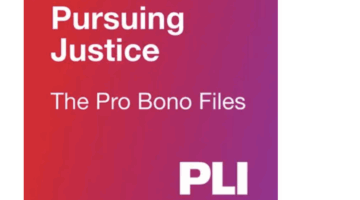Litigators are spoiled when it comes to technology. There are searchable databases that check and cross-check the assembled history of common law for relevant, fact-specific precedent at the speed of light. The latest eDiscovery algorithms cull tens of millions of documents for relevance and importance. Even rough deposition transcripts appear in real-time on computer screens. Legal tech shows are a gadget-happy litigator’s dream.
Corporate lawyers aren’t quite as lucky. Great products exist to aid the intrepid transactional lawyer, but they’re often overlooked in the crush of litigation tools. So it generated some fanfare a couple weeks ago when Bloomberg Law unveiled Corporate Transactions, its new “one-stop shopping” tool for transactional attorneys — one that leverages Bloomberg’s unique financial information with BNA’s decades of news-gathering know-how to launch it into “must have” territory for corporate lawyers.
Bloomberg Law President David Perla, himself a former M&A lawyer, described the ultimate goal of the product: “We want to make lawyers more efficient. The tool embeds all that.”

The Trump Gold Card: A New $1 Million Pathway To A U.S. Green Card
A new proposal would let wealthy foreign nationals secure an opportunity for a U.S. green card with a $1 million 'gift' to the government, sparking legal and ethical debate.
Striving for efficiency is evident from the product’s homepage. Corporate Transactions is built with the workflow of transactional lawyers in mind. As opposed to welding some corporate treatises onto a litigation tool, Corporate Transactions offers a clean interface allowing the user to select whether they want to “Draft,” “Research,” or “Stay Current,” which Perla identifies as the three broad tasks of a corporate lawyer.
The product offers a lot to corporate lawyers, but the stand-out, killer feature is its “Draft Analyzer,” a unique technology that compares a proposed draft against market language derived through an algorithmic analysis of every EDGAR filing. It breaks up the draft agreement into individual paragraphs and redlines each against its determined market language for that specific provision. No more snow jobs from the other side trying to sell you on “market” language — conveniently biased toward their client — based on their “years of experience.” You’ve got cold, hard, empirical data on the consensus language in your hands.
And the results are scalable to the specifics of the deal. Limit the comparison by time, size of deal, firms involved, or whatever relevant factor could improve the specificity of the language, and the system will develop templates — derived from precedents — to assist your drafting.
It’s not just about fixing the language in the first draft, it’s about making sure an associate isn’t missing the boat on some language entirely. Perla explained:

Pursuing The Pro Bono Story: A Conversation With Alicia Aiken
This Pro Bono Week, get inspired to give back with PLI’s Pursuing Justice: The Pro Bono Files, a one-of-a-kind podcast hosted by Alicia Aiken.
Forget what’s market, what am I missing? If I’m drafting it or if I’m revising it, I want to be able to say to the partner I went back and added the stuff that’s missing. If you’re the partner, you want to be able to go to your client and say, “This is not market standard. I’m an advisor to you because I can tell you this is not market standard based not just my experience, but we ran this against all these other agreements”… and in an empirical way, instead of just relying on [a lawyer’s] own experience or maybe a limited amount of institutional knowledge.
The “Deal Maker” function allows attorneys to begin drafting with the aid of Bloomberg’s over 800K document precedent bank, sortable by industry, deal size, etc. It’s a far cry from searching the firm’s document management system and reading a bunch of questionably related deal docs for guidance.
Whenever evaluating new technology, it’s worth wondering if it’s about to John Henry half the associates in America. But Corporate Transactions is more about transitioning billable hours away from slogging through potentially unrelated models to glean market amongst the limited tea leaves toward more refined lawyering, crafting the subtle changes to suit the specific deal — as Perla characterized it, it gives lawyers more time to show their clients, “here’s why I’m better.”
Bloomberg Law Commercial Product Director Carl Sussman, who ran my demo of the product, compared the tool to the replacement of Shepardizing — eliminating one arduous task while opening a new world of more effective research. After playing with the platform for a few minutes, the comparison feels accurate.
The “Research” function is about what you’d expect — treatises and the like — with an important twist: deal analytics that leverage Bloomberg’s financial sector data to allow lawyers to take a snapshot of deal activity. Basically all the information that one could get from a Bloomberg Terminal in an easy-to-consume format for lawyers.
Finally, the “Stay Current” function leverages the BNA side of Bloomberg BNA, providing searchable news.
Even with no transactional experience, I could sense this was a breakthrough tool. Sussman described the philosophy of the product in three bullets:
1. Employing the unique tech and data advantages of Bloomberg BNA;
2. Providing a broad offering that fulfills a lawyer’s needs at all stages of workflow; and
3. Utilizing a task-based interface for ease of use.
On those counts, the platform appears to be a smashing success.